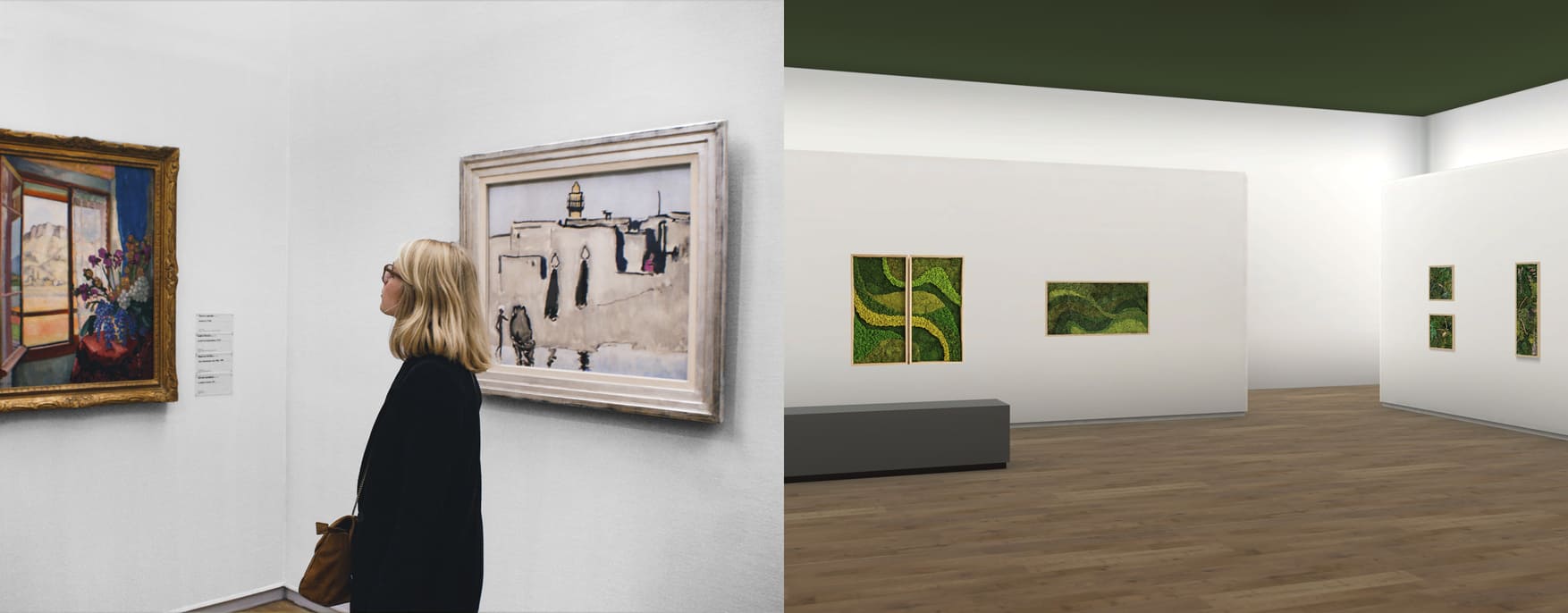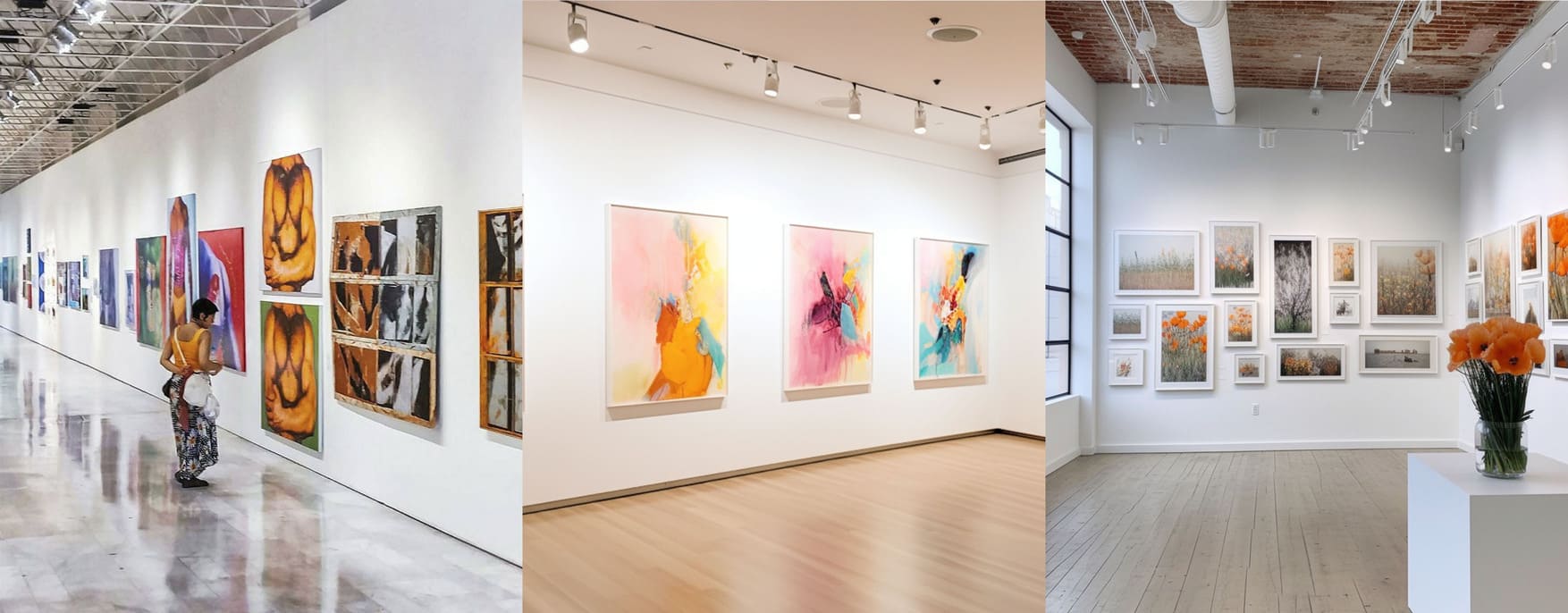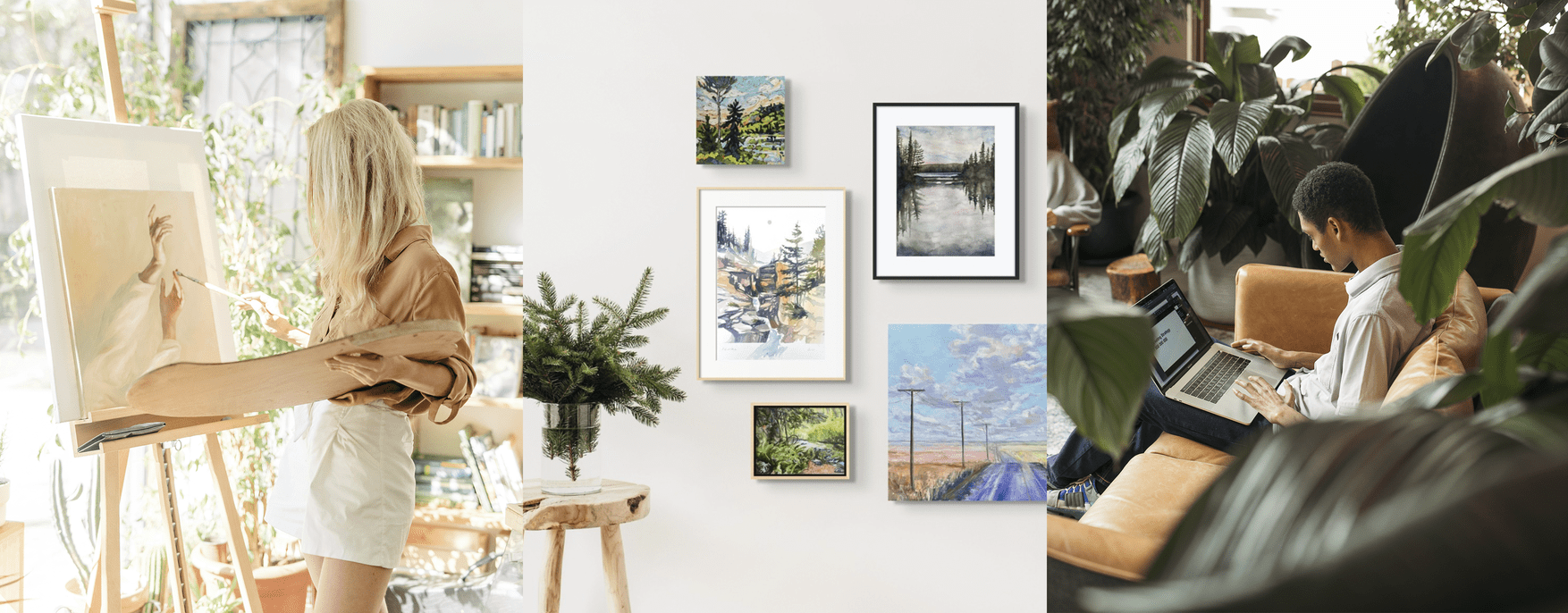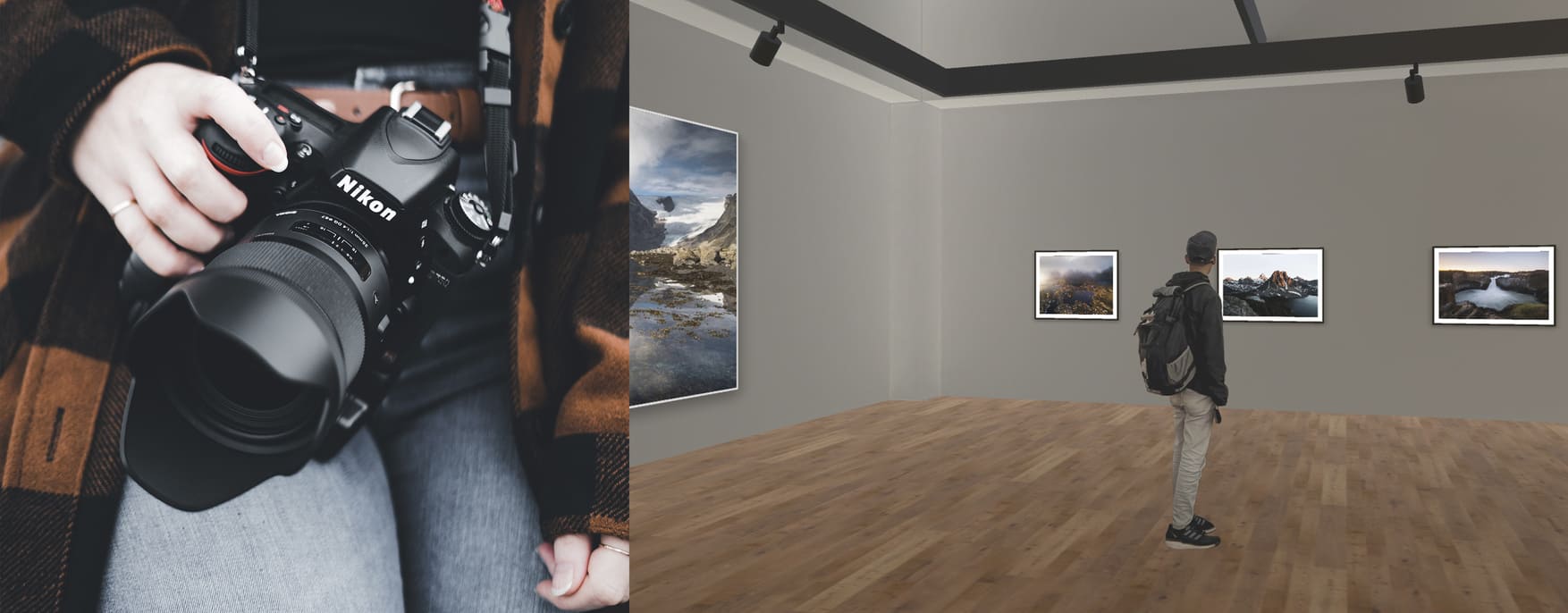Each day the barriers between the physical and the digital world dissolve more and more. Just like we inhabit studios and galleries, we also inhabit online spaces both for creation, showcase, and networking. Artists now have an opportunity to talk to a worldwide audience that is just one click away.
If you are wondering how you can build that bridge between the artistic work you are doing while you are offline, into the many worlds, feeds, forums, and threads available online, keep reading and learn how to bring your in situ art shows and exhibitions to the digital landscape.
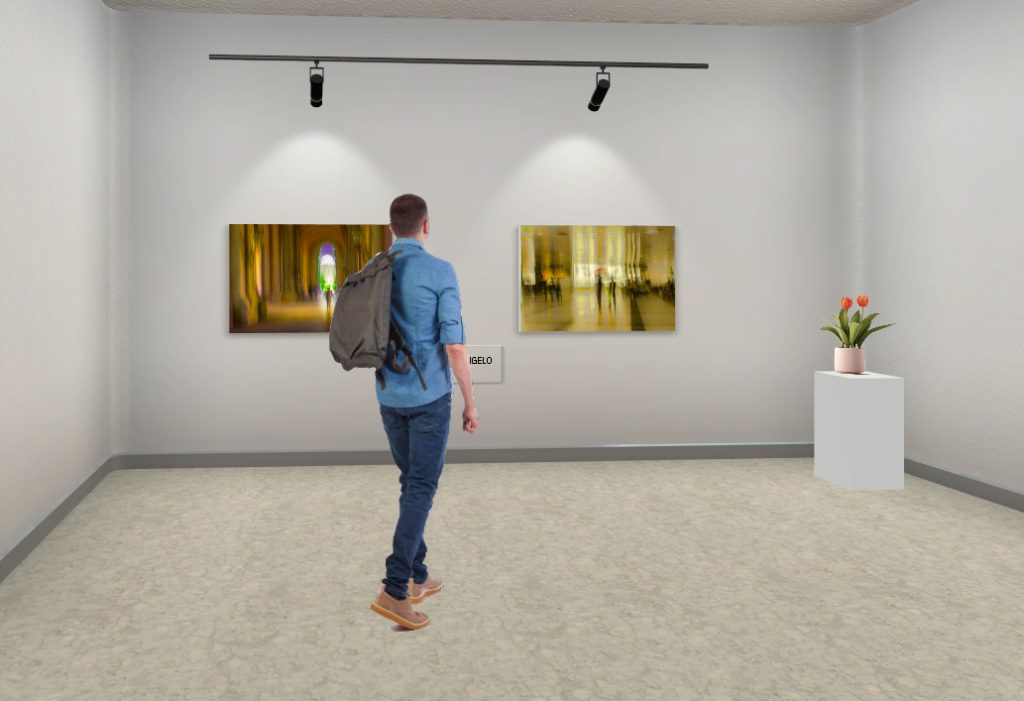
Contents
How to recreate your in situ art show online
Bringing your in situ art show to a digital space is not only a matter of recreating what you have already created in a physical gallery, it is about creating a hybrid experience. Look at it as a part of your curatorial process that enables you to play with new formats like videos and GIFs, creating new ways of dialogue with your artworks and the message you want to convey.
It all starts with picking the right digital gallery that fits your goal and aesthetic. Luckily, ArtPlacer offers a wide variety of customizable galleries ranging from the traditional art booth (as seen above) to modern and eclectic spaces that can help you convey a similar ambiance and artistic vision to the one created in a physical gallery.
Now that you have picked a gallery, the next step is uploading the selected artwork of your show. Make sure to have good-quality photos of each piece. You can close the gap between the physical and digital space with the customization options: picking the texture of the floors as well as the colors of the walls and ceiling. For more details, follow this step-by-step guide on how to curate an engaging online art show.
But how can you build a bridge between the two exhibitions? Here is a list of things to do offline:
-Place QR codes in the brochure and near each artwork: this can link to your virtual gallery and give the visitor a chance to revisit the experience at home where they can reengage with the experience, learn more about each piece and make direct inquiries.
-Have a visitor’s sheet where people can sign up for your newsletter to stay in touch.
-Create a hashtag visitors can use to share their experience on social media.
-Invite potential collectors inquiring about artworks to visit your website and enter the digital showcase for more information and direct purchase opportunities, as a part of a strategically designed art buyer’s journey.
Check this exclusive ArtPlacer Academy recorded webinar with curator Gita Joshi, “Key art marketing strategies to promote your exhibition”. Take the lesson by logging into your ArtPlacer account or starting your free trial.
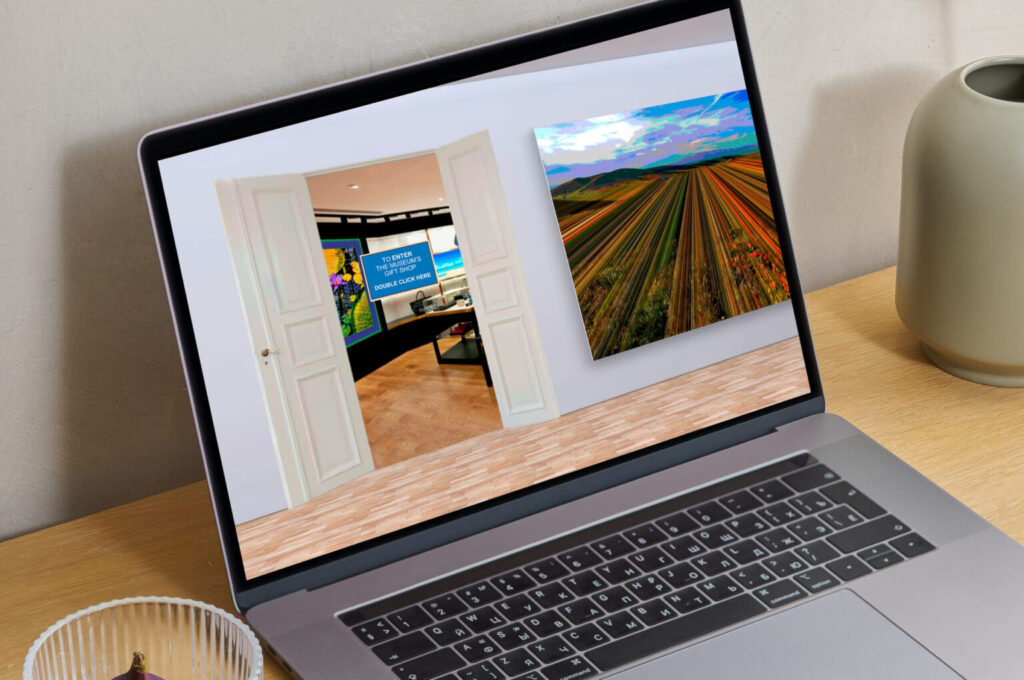
While curating your exhibition:
-Upload a video to your gallery with a brief “Talk with the artist” giving a first-person account about the exhibition.
-Use this set of downloadable assets to recreate the feeling of an in situ strategy online: Out-of-the-box ideas to take your online art show to the next level.
-Have a friendly art purchase experience with the integration of “Buy” and “Inquiry” buttons on each artwork in the virtual gallery.
-Close any art buyer’s doubts at the point of sale: Virtual Exhibitions automatically give visitors the chance to see how your artwork will look on their walls with ArtPlacer’s AR technology.
-Upload your show’s brochure and make it accessible to your online audience, this should have your artist’s and exhibition’s statement, for further clarity.
-Embed your exhibition on your website and make it easy to find and visit.
-Make sure each exhibited piece is linked to your artwork product page on your professional or gallery website. Follow this quick guide to optimize your artwork description page.
Things to do online after curating your show:
-Have a killer art marketing strategy to promote your show that covers an expectation campaign before the launch, ongoing publications while the art show is available, and even post ideas for the aftermath to connect with your audience and new followers.
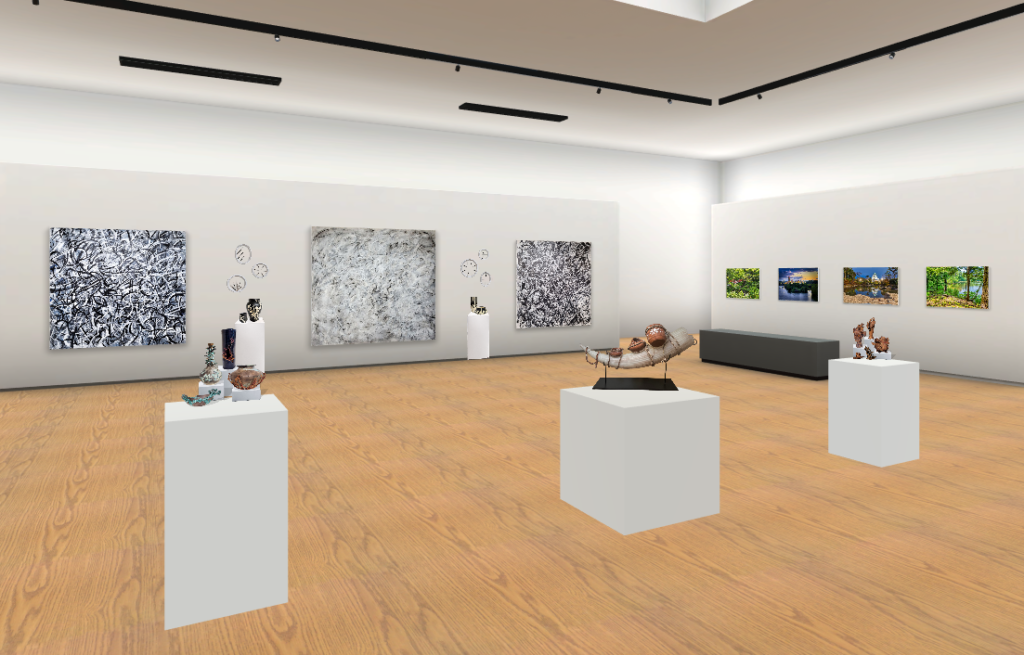
How a digital gallery can help you expand the audience of your physical art show
When Raid Jacobs and Stephanie Cora, artists and founders of the Coria Jacobs Gallery, decided to join forces to represent and exhibit both emerging and established artists from across the US, their main goal was to “make art accessible and to provide a space for artists to grow”.
Galleries and showrooms are spaces where artists, art lovers, curators, and all the people who are part of the art world ecosystem, can get together and start a conversation around the artworks, the collections, and the creators. What once was an event that was limited to your local community, now can expand beyond frontiers.
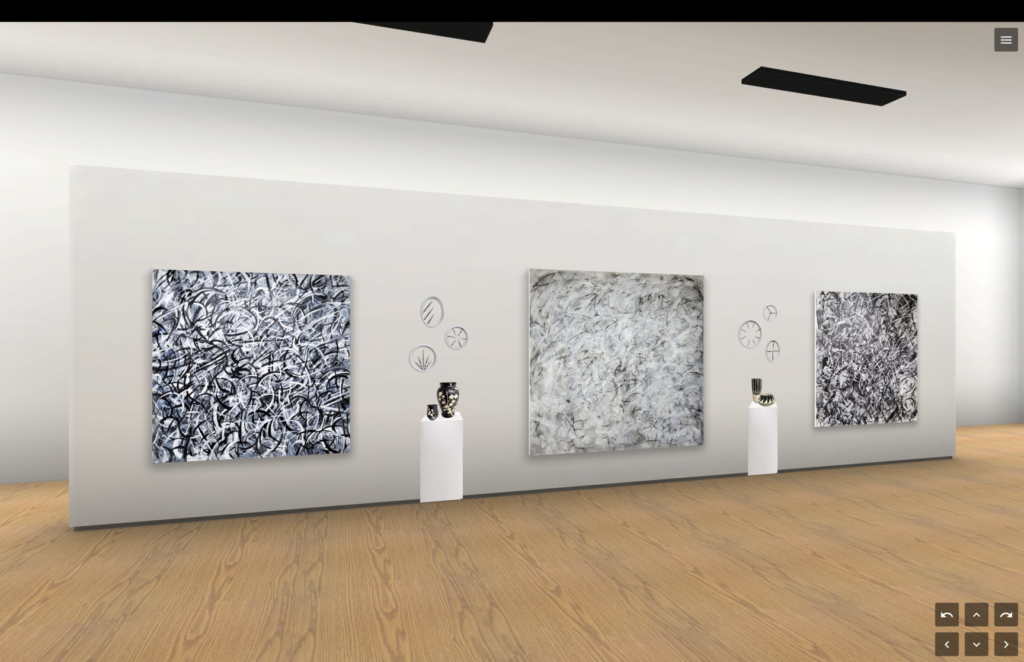
Bringing their physical art shows online with the help of ArtPlacer’s Virtual Exhibitions, opened a new opportunity to get artists that work with both 2D and 3D artworks to a wider audience, and still keep working on their intention of building a community around a showcase. In Coria’s words:
“These virtual tours have been a great way for us to share our collection with a wider audience. Not only can our out-of-state artists, friends, and family view and share the tours, but I personally have family in Mexico that has enjoyed following our “art journey” as well – so we can really get a global audience on top of our local community.”
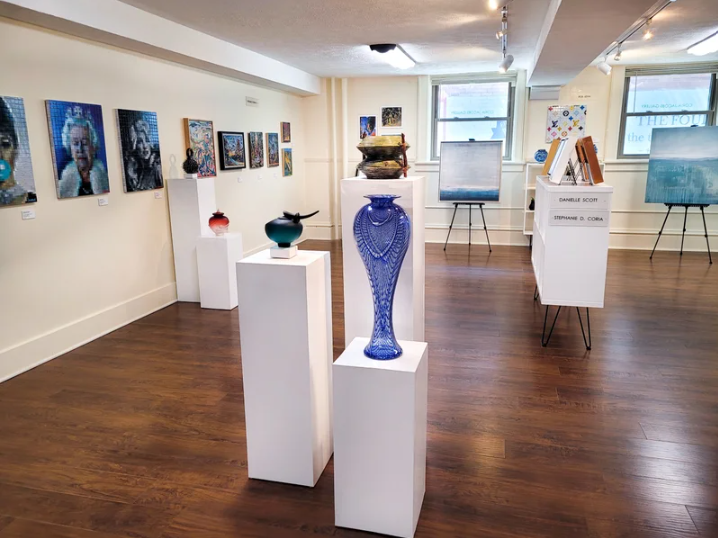
By taking the show online, they opened the doors to “shareability”, or the ability to share their exhibition by just copying and pasting a link online, making it accessible to anyone with an internet connection across the globe. This way managed to not only expand their audience but to engage with visitors who enjoy this virtual journey and connect with the message. Their community is now a global one, connected through a common interest in art and the different mediums artists use to express themselves.
Protip: with ArtPlacer’s Analytics you can have a deeper understanding of your audience and their interests, you can easily see where they are located, what artworks they are more interested in, and other data that will help you tune your strategy and cater to their needs.
Beyond the gallery walls: creating a digital exhibition for direct art purchases
Virtual exhibitions offer you the chance to customize both the space and the visitor’s experience. This opens a wide range of opportunities for showcase, and also, for achieving your art business oriented goals.
If you are interested in selling a particular set of artworks from the collection you are showcasing, a good strategic and creative solution is to curate a Virtual Exhibition with just these selected pieces.
This selected curation will help potential art buyers and collectors focus on the available pieces. A Virtual Exhibition will enable them to not only know more about artworks, but also visualize them on their own walls with AR technology and access a direct “Buy” button, creating a seamless purchase experience that solves all possible doubts they might have before investing in one of your pieces.
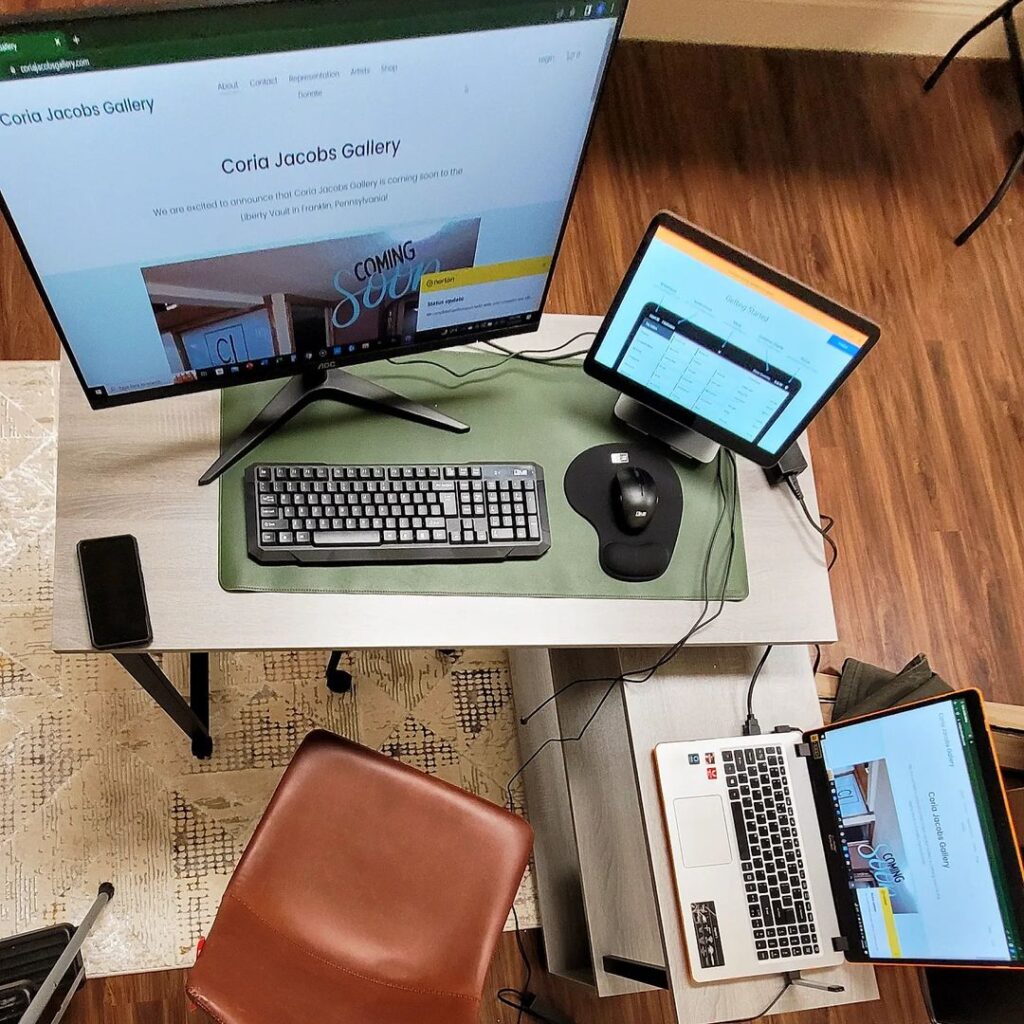
Keep the conversation going: how to connect with your audience after their visit
Before the advent of digital art shows, once an in situ art exhibition closed its doors, it also closed down a space for connections between artists and their audience. Now with the help of digital art marketing tools, these events can be a starting point for a long-standing relationship that can bring exposure, recognition, and also, sales and commissions.
Here are some good practices that will help you further connect both worlds and make the best of the opportunities that digital channels open for interaction with your audience:
-Send a “Thank you for your visit” email to visitors who have shared their contact information with a link to the Virtual Exhibition. You can use AI technology writing prompts to help you draft this content.
-The physical gallery might be closed for the day but you can keep visitors coming online: share a picture of the digital gallery with a link to your Virtual Exhibition on your Stories.
-Create a short video or Reel of your online show and share it on your profiles inviting people to visit it. This creates social proof of the impact of your exhibition.
-Use the direct link of your Virtual Exhibition to reach out to media outlets, journalists, and bloggers, creating an opportunity for a feature and also, for a possible visit to your in situ show.
-Send a storytelling-driven newsletter sharing your views on this show with your audience and inviting them to relive it online on your virtual gallery.
Now that you know how to bring your in situ art show to the digital world, it’s time to brainstorm ideas for your next exhibition!
